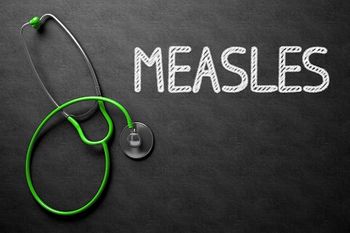
- Contagion, Winter 2024 Digital Edition
- Volume 9
- Issue 04
The Changing Climate of Vector-Borne Diseases
These types of infections will continue to rise, and there is a need to understand what we are witnessing and find ways to combat them.
The consequences of climate change are now readily visible worldwide. Driven primarily by greenhouse gases released into the atmosphere by human activities such as the burning of fossil fuels, average global temperatures for the past decade have been the warmest in recorded history.1 Current trends are expected to persist, with global average temperatures estimated to rise an average of 1.5 °C (approximately 2.7 °F) above the preindustrial levels by 2040 and, depending on societal action in the present, are projected to rise between 2.1 °C to 4.6 °C (3.8 °F to 8.3 °F) by the end of the century.2 This rise in global average temperatures will manifest locally as changes in precipitation, humidity, temperature ranges, and seasons along with an increased frequency of extreme weather events such as floods and tropical cyclones. These changes will have widespread effects on many aspects of human health, especially on the spread of infectious diseases such as those spread by insect vectors.3
Vector-borne diseases (VBDs) are infections that are transmitted from human to human or from animal to human via animal vectors, typically blood-feeding insects. VBDs cause up to 17% of all infectious diseases globally and account for more than 700,000 deaths annually.4 Given the multiple species involved, transmission involves complex interactions between host, vector, and animal reservoirs, which are all influenced by their respective environments. Climate change is altering these environments, and when the result of this change leads to increases in human exposure to vectors, disease incidence can also increase. We have recently seen the emergence of novel VBDs such as wetland virus, the geographic spread of known VBDs such as Oropouche virus and malaria, and outbreaks of VBDs such as eastern equine encephalitis (EEE) virus and West Nile virus (WNV). This rising prevalence makes understanding how climate change affects these pathogens, vectors, and hosts paramount.
Climate Change Effects on Vectors and Pathogens
Disease-spreading insect vectors are all poikilotherms. This means that the external environmental temperature heavily influences their physiology, behavior, and ecology. Insects such as mosquitoes and ticks are the primary vectors for VBD, but other insects such as species of midges, flies, and beetles are potential vectors for these diseases.
Mosquitoes are important vectors for the spread of pathogens such as malaria, dengue, Zika, EEE, WNV, and chikungunya virus. Their life cycle typically lasts less than 1 month and requires standing water for the initial stages. Because of this, mosquito populations are affected by changes in precipitation and extreme weather events such as floods and tropical cyclones. The increase in standing water after these events leads to an increase in places for mosquitoes to breed and thus an increased population of mosquitoes capable of spreading disease. An example of this came in 2023, when a severe monsoon season caused catastrophic flooding in Pakistan, which led to a 5-fold increase in malaria cases.5
Warmer temperatures increase the efficiency of the mosquito gestational cycle, leading to females having more than 1 cycle over their lifetime. Because each cycle requires the female mosquito to acquire a blood meal, this leads to more bites that could potentially transfer disease.6 This also increases the overall population of mosquitoes, increasing human exposure to vectors and pathogens. Mosquitoes die with the first frost, and as global average temperature increases, longer summers are expected to extend mosquito season by 1 to 2 months by 2050 for disease-causing mosquitoes such as Aedes spp, which are the vectors responsible for dengue, Zika, yellow fever, and chikungunya.7
Short-term atmospheric conditions (weather) can affect individual vectors and their populations on a local scale. Longterm, prevailing weather patterns (climate) have the potential to influence the entire geographic range of a species. From 1898 to 2016, the range of Anopheles mosquitoes, the vector that spreads malaria, gained an average of 6.5 m of elevation per year and their geographic ranges moved poleward 4.7 km annually.8 The compilation of these temperature-based effects, both on the individual mosquitoes and their larger populations, has been directly associated with an increased risk of infection. For example, a recent meta-analysis found that an increase of 1 °C in high temperatures is associated with a 13% rise in dengue infection risk.9
Warmer temperatures can also affect the biology of the pathogens themselves. Plasmodium species are parasites responsible for malaria. Elevated temperatures increase the parasite development rate within the mosquito vector, thus increasing the ability of the mosquito to infect other hosts such as humans.6
Ticks, such as those from the genus Ixodes, spread VBDs such as Lyme disease, babesiosis, anaplasmosis, and Powassan virus disease. Warmer temperatures increase the activity of ticks, and they spend more time searching for blood meals, leading to more opportunities for them to spread disease.10 Longer summers increase the time when ticks and humans are active, which also increases the exposure of humans to potential VBDs. Ticks live longer than mosquitoes and can survive winters by burying themselves in the ground. Warmer temperatures lead to milder winters, which allow a larger population of ticks surviving to the spring. This allows the following year’s population to grow.10
Similar to mosquitoes, climate change is also shifting the range of ticks that can carry VBDs. Globally, this movement is toward the poles, and in the United States and Canada, tick-borne diseases are spreading toward the west.11 For many vectors, the increasing temperatures around the equatorial region will eventually reach their thermal maximum, the highest level where they are able to survive. This is typically 40 °C (104 °F) and is predicted to decrease VBDs in those areas, albeit with a tremendous loss of biodiversity.
Climate Change Effects on Animal Reservoirs
Many VBDs are zoonotic, and animal reservoirs act as the primary, replicative hosts, with human infection representing a dead end for the pathogen. Examples of these VBDs include West Nile virus, a bird pathogen spread to humans by mosquitoes after they have fed on an infected bird. For these zoonotic VBDs, the geographic range of the animal is an important factor contributing to human exposure to the pathogen. Models estimate that more than half the earth’s animal species are experiencing climate-induced migrations of their natural ranges, many northward and to higher latitudes as habitat suitability declines in the global south.12 The spread of animal reservoirs into immunologically naive populations increases the risk of pathogens spreading to other animals and humans.8 Changes in precipitation and temperature affect the availability of food and shelter for rodents and other animal reservoirs. These changes can influence the size of their populations and drive them closer to population centers. This increases human exposure and has been shown to influence diseases such as plague, which can be spread to humans from infected rodent fleas.13 As less of the planet becomes habitable, an increased amalgam of animal species and humans will come into contact with one another, increasing the risk for the spread of diseases between species.
Climate Change Effects on Human Hosts
The ways that climate change affects the spread of VBD intersects with many other changes happening in the world today, such as urbanization, deforestation, and globalization. As the human population grows and cities expand, there is increasing contact between humans and animals, vectors, and pathogens. This raises the risk of spillover events into humans, a phenomenon increasingly relevant with the recent spread of highly pathogenic avian influenza. Climate change also exacerbates the health inequalities associated with socioeconomic factors. Extreme weather events such as flooding and droughts can lead to crop failures and famine, which foment political instability and conflicts. Populations from equatorial regions are especially at risk of these effects caused by a changing climate.14
Conclusion
Climate change has the potential to magnify the impact of more than half of known human pathogens.15 Although we have effective treatments for many of the aforementioned diseases, several VBDs, such as the mosquito-borne encephalitides EEE and WNV, don’t have standard, effective treatments. That makes mitigation and prevention the mainstay approaches for improving outcomes from these diseases. Developing new, effective vaccines and improving access to existing vaccinations will be important, especially in low- and middle-income countries. Involving communities in vector control measures is important as are educational efforts about insect repellents, mosquito nets, and removal of standing water where mosquitoes can breed. Investments in public health infrastructure for disease surveillance are vital. It is also important that this disease surveillance occurs not only in humans but also in animals and insect vectors. Finally, health care providers have a responsibility to advocate for policies aimed at ending fossil fuel dependence, which is ultimately necessary to mitigate the human health impacts of climate change. Many changes are now inevitable, but with thoughtful preparation, their effects on human health need not be catastrophic.
References
1.Lindsey R, Dahlman L. Climate change: global temperature. January 18, 2024. Accessed September 22, 2024. http://www.climate.gov/news-features/understanding-climate/climate-change-global-temperature
2.Méndez C, Simpson NP, Johnson FX.Climate Change 2023: Synthesis Report Contribution of Working Groups I, II and III to the Sixth Assessment Report of the Intergovernmental Panel on Climate Change. Intergovernmental Panel on Climate Change; 2023.
3.Phillips MC, LaRocque RC, Thompson GR 3rd. Infectious diseases in a changing climate. JAMA. 2024;331(15):1318-1319. doi:10.1001/jama.2023.27724
4.Vector-borne diseases. World Health Organization. September 26, 2024. Accessed October 29, 2024. https://www.who.int/news-room/fact-sheets/detail/vector-borne-diseases
5.Venkatesan P. The 2023 WHO world malaria report. Lancet Microbe. 2024;5(3):e214. doi:10.1016/S2666-5247(24)00016-8
6.Shapiro LLM, Whitehead SA, Thomas MB. Quantifying the effects of temperature on mosquito and parasite traits that determine the transmission potential of human malaria. PLoS Biol. 2017;15(10):e2003489. doi:10.1371/journal.pbio.2003489
7.Ryan SJ, Carlson CJ, Mordecai EA, Johnson LR. Global expansion and redistribution of Aedes-borne virus transmission risk with climate change. PLoS Negl Trop Dis. 2019;13(3):e0007213. doi:10.1371/journal.pntd.0007213
8.Carlson CJ, Bannon E, Mendenhall E, Newfield T, Bansal S. Rapid range shifts in African Anopheles mosquitoes over the last century. Biol Lett. 2023;19(2):20220365. doi:10.1098/rsbl.2022.0365
9.Damtew YT, Tong M, Varghese BM, et al. Effects of high temperatures and heatwaves on dengue fever: a systematic review and meta-analysis. EBioMedicine. 2023;91:104582. doi:10.1016/j.ebiom.2023.104582
10.Bouchard C, Dibernardo A, Koffi J, Wood H, Leighton PA, Lindsay LR. N increased risk of tick-borne diseases with climate and environmental changes. Can Commun Dis Rep. 2019;45(4):83-89. doi:10.14745/ccdr.v45i04a02
11.Alkishe A, Raghavan RK, Peterson AT. Likely geographic distributional shifts among medically important tick species and tick-associated diseases under climate change in North America: a review. Insects. 2021;12(3):225. doi:10.3390/insects12030225
12.Carlson CJ, Albery GF, Merow C, et al. Climate change increases cross-species viral transmission risk. Nature. 2022;607(7919):555-562. doi:10.1038/s41586-022-04788-w
13.Nakazawa Y, Williams R, Peterson AT, Mead P, Staples E, Gage KL. Climate change effects on plague and tularemia in the United States. Vector Borne Zoonotic Dis. 2007;7(4):529-540. doi:10.1089/vbz.2007.0125
14.Chen M, Caldeira K. Climate change as an incentive for future human migration. Earth Syst Dynam. 2020;11(4):875-883. doi:10.5194/esd-11-875-2020
15.Mora C, McKenzie T, Gaw IM, et al. Over half of known human pathogenic diseases can be aggravated by climate change. Nat Clim Chang. 2022;12(9):869-875. doi:10.1038/s41558-022-01426-1
Articles in this issue
10 months ago
I’m Sorry, but It’s Time We Talk About Politics11 months ago
Contagion Winter 2024 Digital EditionNewsletter
Stay ahead of emerging infectious disease threats with expert insights and breaking research. Subscribe now to get updates delivered straight to your inbox.

































































































































































































































































































